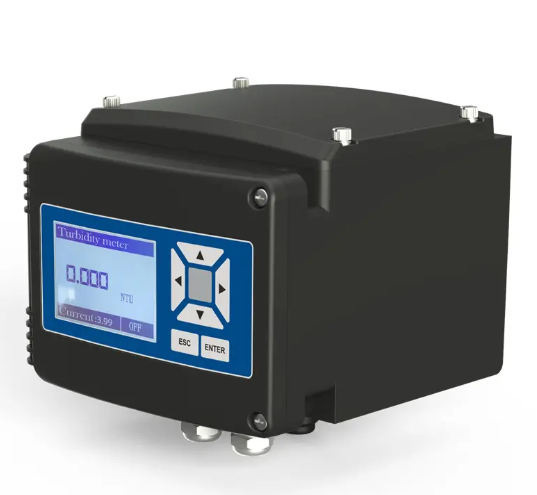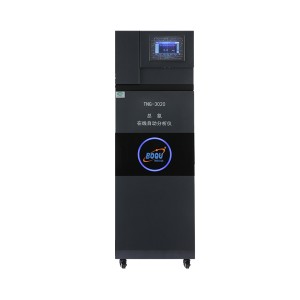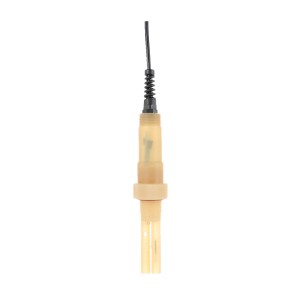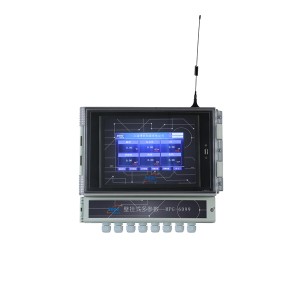In today’s industrial landscape, real-time monitoring of water quality is paramount. Whether it’s in water treatment plants, industrial production facilities, or even direct drinking water systems, maintaining the purity and clarity of water is vital.
One critical tool that has revolutionized the process of monitoring water turbidity is BOQU’s Integrated Low Range Water Turbidity Sensor With a Display.
In this blog, we will delve into the key features and benefits of this cutting-edge turbidity sensor, exploring how it simplifies low-range turbidity monitoring, ensures data accuracy, and offers easy maintenance, making it an indispensable asset for various industries.
What Is A Water Turbidity Sensor?
Before we delve into the remarkable features of BOQU’s Integrated Low Range Water Turbidity Sensor With a Display, let’s first understand the fundamental concept of a water turbidity sensor.
In essence, a water turbidity sensor is a sophisticated device designed to measure the cloudiness or haziness of a fluid caused by large numbers of individual particles suspended in it. These particles, such as silt, clay, organic matter, and plankton, can scatter and absorb light, leading to reduced transparency or turbidity in the water.
- The principle:
The water turbidity sensor operates based on the principle of light scattering. When light passes through the water sample, the suspended particles interact with the light, causing it to scatter in various directions.
The sensor detects and quantifies this scattered light, enabling it to provide a turbidity measurement. This measurement is crucial in various applications, including water treatment plants, environmental monitoring, industrial processes, and more.
Now, let’s explore the exceptional features that set BOQU’s water turbidity sensor apart and the wide-ranging applications it serves in the industrial landscape.
Enhanced Precision with EPA Principle 90-Degree Scattering Method:
The heart of BOQU’s Integrated Low Range Water Turbidity Sensor lies in its utilization of the EPA principle 90-degree scattering method. This specific technique is perfectly tailored for low-range turbidity monitoring, allowing for precise and accurate readings even in environments with low turbidity levels.
By emitting parallel light from the sensor’s light source into the water sample, the particles in the water scatter the light. The sensor’s silicon photocell receiver then captures the scattered light at a 90-degree angle to the incident angle. Through advanced calculations based on this relationship, the sensor derives the turbidity value of the water sample.
- Superior Performance in Low-Range Turbidity Monitoring
The EPA principle 90-degree scattering method provides superior performance when it comes to monitoring low-range turbidity. With its sensitive detection capabilities, the sensor can detect minute changes in turbidity levels, making it ideal for applications where maintaining extremely clear water is crucial.
- A Boon for Water Treatment Plants
Water treatment plants rely heavily on accurate turbidity measurements to ensure the efficacy of their processes. BOQU’s sensor, with its precision and stability, becomes an indispensable tool in the water treatment arsenal, allowing operators to take prompt actions whenever turbidity levels deviate from the desired range.
- Securing High-Quality Drinking Water
In direct drinking water systems, maintaining water clarity is non-negotiable. The EPA principle 90-degree scattering method empowers water authorities to maintain the highest standards of water quality, providing safe and clean drinking water to the public.
Unparalleled Data Stability and Reproducibility:
Consistency and reliability in turbidity data are crucial for making informed decisions and taking timely corrective actions. BOQU’s Integrated Low-Range Water Turbidity Sensor excels in delivering stable and reproducible data, fostering trust in the monitoring process.
- Continuous Reading for Real-Time Insights
With its continuous reading capability, the sensor offers real-time insights into turbidity fluctuations. Operators can observe turbidity changes over time, allowing them to identify trends and patterns, and tackle potential issues before they escalate.
- Ensuring Data Accuracy in Industrial Production Facilities
In various industrial production facilities that rely on water, consistent data accuracy is essential for maintaining product quality and process efficiency. The sensor’s stable and reproducible readings help manufacturers optimize their operations and minimize the risk of production disruptions.
- Empowering Data-Driven Decision Making
In a data-driven world, having reliable information is key to making well-informed decisions. BOQU’s turbidity sensor provides the foundation for data-driven decision-making in various industries, ensuring that choices are based on accurate and up-to-date turbidity data.
Simplified Cleaning and Maintenance:
Any industrial tool must be easy to maintain to maximize efficiency and minimize downtime. BOQU’s Integrated Low-Range Water Turbidity Sensor is designed with simplicity in mind, making it a breeze to clean and maintain.
- Minimal Downtime, Maximum Productivity
The ease of cleaning and maintenance ensures that the sensor is up and running in minimal time, maximizing the efficiency of the monitoring process. This feature is particularly advantageous for critical applications where continuous monitoring is essential.
- Long-Term Cost Savings
By streamlining cleaning and maintenance tasks, the sensor contributes to long-term cost savings. Reduced downtime and lower maintenance expenses add to its appeal as a valuable investment for industries looking to optimize their operations.
- User-Friendly Interface for Hassle-Free Maintenance
BOQU’s water turbidity sensor comes equipped with a user-friendly display that guides operators through the maintenance process. This intuitive interface simplifies the task, making it accessible to both experienced technicians and newcomers.
Enhanced Safety Features and Wide Applications:
Apart from its primary functions, BOQU’s Integrated Low Range Water Turbidity Sensor incorporates safety features and finds applications in various industrial settings.
- Ensuring Device and Operator Safety
The sensor’s power positive and negative polarity reverse connection protection guarantees the safety of the device and its operators, preventing potential electrical hazards during installation and maintenance.
- Robust and Reliable in Diverse Settings
The sensor’s RS485 A/B terminal wrong connection power supply protection ensures that it remains robust and reliable, even in demanding industrial environments. This resilience makes it an ideal choice for diverse applications across different industries.
Final words:
In conclusion, BOQU’s Integrated Low-Range Water Turbidity Sensor With a Display represents a game-changer in the field of real-time water turbidity monitoring.
With its EPA principle 90-degree scattering method, stable data, easy maintenance, and versatile applications, this sensor is the go-to solution for industries that value water quality and efficiency.
Embracing this cutting-edge technology equips industries with the power to protect their processes, optimize productivity, and ensure the delivery of clean and safe water to communities.
Post time: Jul-14-2023
















